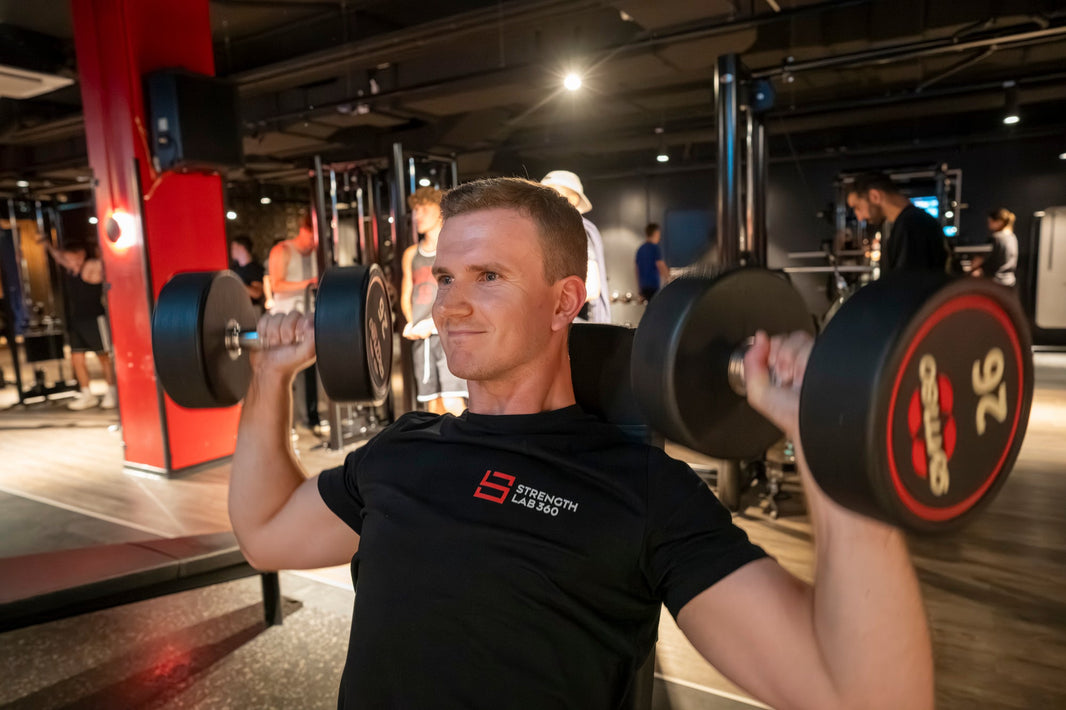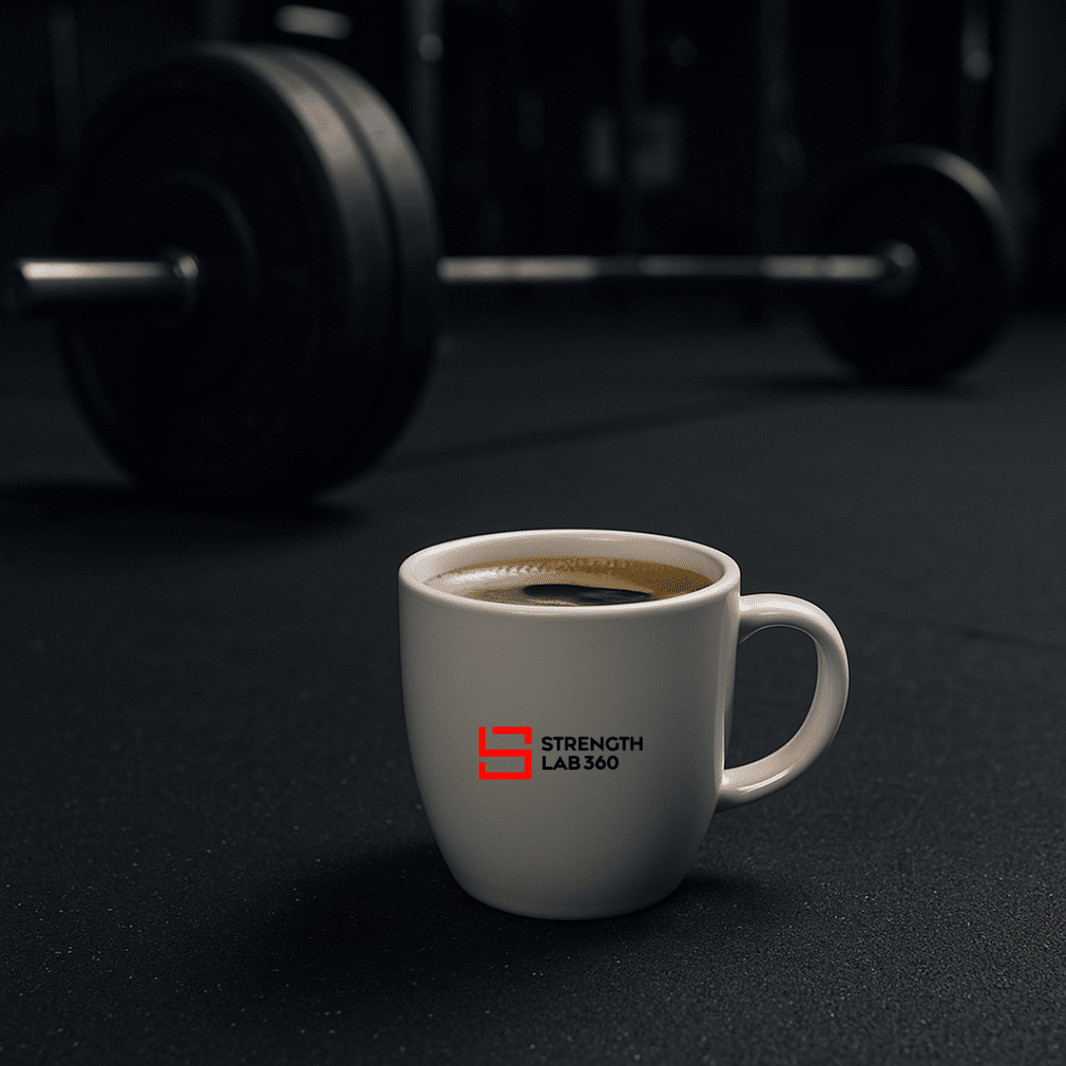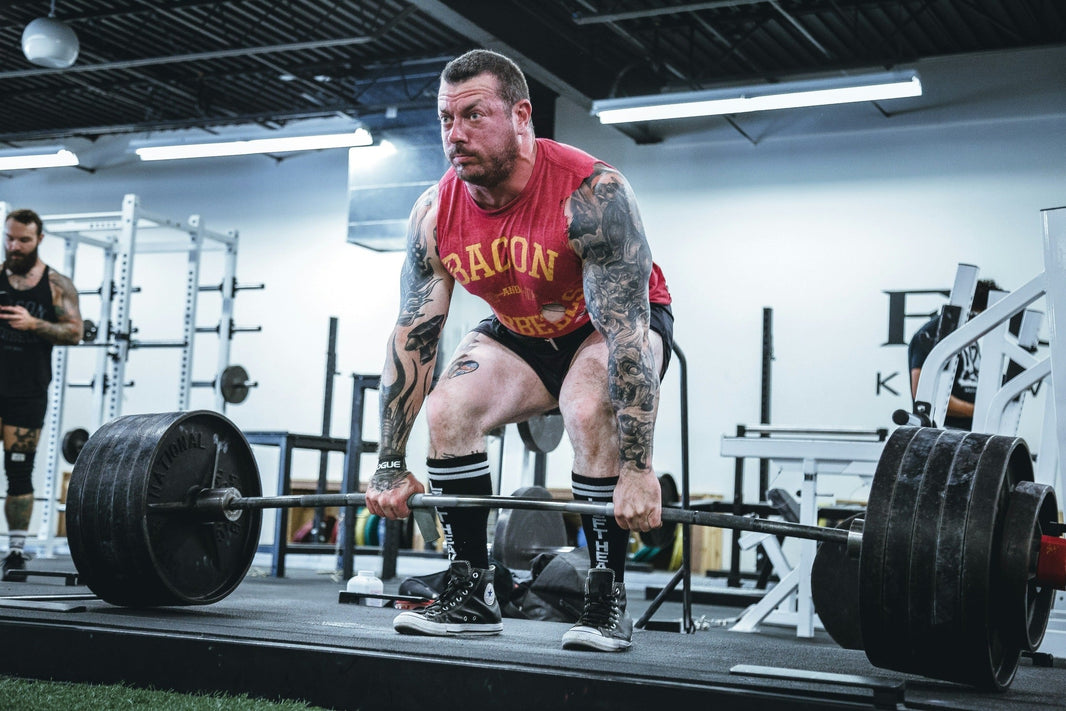Strength Training: Why Heavy Loads Matter
Strength training workout programs aren’t just for athletes. They’re foundational for anyone who wants to get stronger, build muscle, and improve long-term health. Whether you're lifting a barbell, using bodyweight exercises, or training with free weight tools at the gym, the goal remains: strength training can increase resilience, function, and performance. This article explains why using heavier weights—especially loads above 60% of your 1RM—is more efficient for gaining strength. Drawing on key studies including a major 2017 meta-analysis by Schoenfeld et al., we break down the benefits of heavy resistance training, training methods, and how to start strength training effectively.
What Is Strength Training and Why Should You Strength Train?
To strength training means to engage in physical activity that applies resistance training to specific muscles or muscle groups. This can include exercises using free weights, weight machines or body weight. A strength training workout typically aims to develop muscle strength through a training regimen tailored to the individual’s goals.
Weight training improves muscle strength and function, increases bone density, supports ligament strength, and enhances metabolic health. The American College of Sports Medicine and the National Strength and Conditioning Association both recommend including strength work in every fitness program.
What the Research Shows
The Schoenfeld meta-analysis (2017) confirms:
-
High loads (>60% 1RM) consistently outperform low loads when it comes to improving 1RM strength.
-
Both low- and high-load training improve strength, but the advantage of heavy lifting becomes more pronounced in trained athletes.
-
While low loads (≤60% 1RM) can increase strength if taken to failure, they require significantly more volume and time.
For example, studies showed:
-
High loads produced a ~35% increase in 1RM.
-
Low loads still produced respectable ~28% strength gains.
This highlights that light work isn’t useless — but heavy loading is more efficient and targeted for maximal strength.
How Does Strength Training Improve Performance and Function?
Strength training can help improve muscle mass, support weight control, and enhance endurance and strength. By recruiting both slow-twitch and fast-twitch muscle fibers, especially during multi-joint exercises, strength training produces wide-ranging functional benefits. Training with moderate to heavy weight also supports better balance, joint stability, and injury prevention.
Notably, strength training may have significant benefits for older adults by preserving mobility and preventing muscle loss. Incorporating progressive resistance training and strength training basics into your weekly training routine helps improve quality of life, reduce fall risk, and boost daily energy.
Why Heavy Loads Matter More Than Just Reps
When you lift the weight that challenges you in the 3–6 rep range (typically 80–95% 1RM), you're training in the optimal zone for strength and power training. Heavy loads stimulate high-threshold motor units, especially the large type II fibers most responsible for force production.
This form of power training promotes muscular strength, enhances neuromuscular efficiency, and strengthens connective tissue such as tendons and ligaments. While resistance training may include both high and low-load strategies, the best strength training for maximal strength gains uses heavy loading in controlled, compound lifts.
Practical Guidelines
-
Load: 80–95% 1RM
-
Reps: 3–6
-
Rest: 2–3+ min
-
Progression: Gradually increase weight, sets, or intensity
For athletes: prioritize compound lifts (squats, deadlifts, presses) with progressive overload. For gen pop clients: even moderate loads with good form can deliver remarkable strength gains.
What Are Examples of Strength Training Exercises That Work?
Effective strength training exercises should target major muscle groups using functional, compound movements. Classic examples include the squat, deadlift, bench press, and overhead press. These use multiple joints and require full-body coordination, making them ideal for building strength.
Free weight movements often provide greater benefits than weight machines because they require stabilization and core engagement. That said, bodyweight exercises like push-ups, pull-ups, and planks are highly effective too—especially for beginners or those who work out at home.
How to Start Strength Training Safely and Effectively
If you're new to strength training, start with lighter training and master your strength training technique. Begin with training sessions that include full-body strength training workouts two or three times per week.
Each training session should include around 5 exercises, 2–3 sets per move, and focus on good form rather than max load. Whether using body weight, dumbbells, or barbells, always warm up and consult a doctor before you start strength work—especially if you have chronic health issues.
Can You Get Stronger Without Heavy Weights?
Yes—but it’s slower and less efficient. Low-load training (e.g., below 60% 1RM) can produce gains in muscular strength when taken to failure. But this requires higher volume of training, longer sessions, and more repetitions. In contrast, using heavy weight allows for effective overload in fewer reps, building strength with less fatigue accumulation.
Some bodyweight strength training exercises can be progressed to offer meaningful overload (e.g., single-leg squats, weighted dips), but most people will eventually need to add weight to continue progressing. The key is to match the training methods to the goal: more strength and power requires more load.
What Are the Benefits of Strength Training?
Strength training also helps control body fat, improve muscle strength, and reduce risk of chronic diseases such as type 2 diabetes and osteoporosis. It enhances muscle strength and function, balances hormones, and supports better mental health.
Whether you train with free weight, weight machines, or body weight, the physiological effects of strength training reach far beyond the gym. By following a smart strength program, you build a more capable, energetic body prepared for real-world challenges.
What Does a Good Strength Training Program Look Like?
A strength training program should include progressive overload, compound lifts, and a structured training regimen that aligns with your experience and goals. For most, training 2–4x per week with alternating intensities works well. Include both multi-joint exercises and some single-joint exercises for joint health and symmetry.
Training will result in better outcomes when the structure includes cycles of building, recovery, and testing. The journal of strength and conditioning and other academic sources highlight the importance of rest, nutrition, and tracking volume when aiming to get stronger consistently.
Can You Work Out at Home and Still Build Strength?
Absolutely. Many exercises can be done with minimal training equipment. Effective exercises at home include push-ups, lunges, squats, and planks. Adding resistance bands or household items like a backpack filled with books can increase difficulty.
For the best at-home routine, aim for 3–4 strength training sessions per week using bodyweight strength training exercises and increasing reps or load over time. Circuit training formats help with strength and endurance.
Are There Any Risks or Myths Around Strength Training?
Strength training is safe when performed with proper technique and programming. Despite myths, it doesn't stunt growth, damage joints, or require extreme equipment. In fact, it supports muscle strength, bone health, and cardiovascular function.
The myth that only athletes or powerlifters should lift weight is false. Everyone from teens to older adults can benefit. Likewise, thinking you need to lift the weight to failure every time is misleading. Instead, use a mix of intensities and techniques to progress safely.
Final Thoughts: Best Strength Training Practices
Heavy strength work is unmatched when it comes to increasing your strength, improving muscle mass, and building long-term resilience. Backed by strength and conditioning research, the practice of lifting heavier loads yields faster, more sustainable progress.
To recap:
-
Strength train 2–4x per week.
-
Use heavy loads (80–95% 1RM) for 3–6 reps to build maximal strength.
-
Include both compound and isolation strength exercises.
-
Train consistently and rest adequately.
-
Choose equipment and training methods that match your environment—whether gym or home.
The effects of resistance training go well beyond the mirror. If you want to get stronger, feel better, and future-proof your health, heavy resistance training should be part of your plan.







